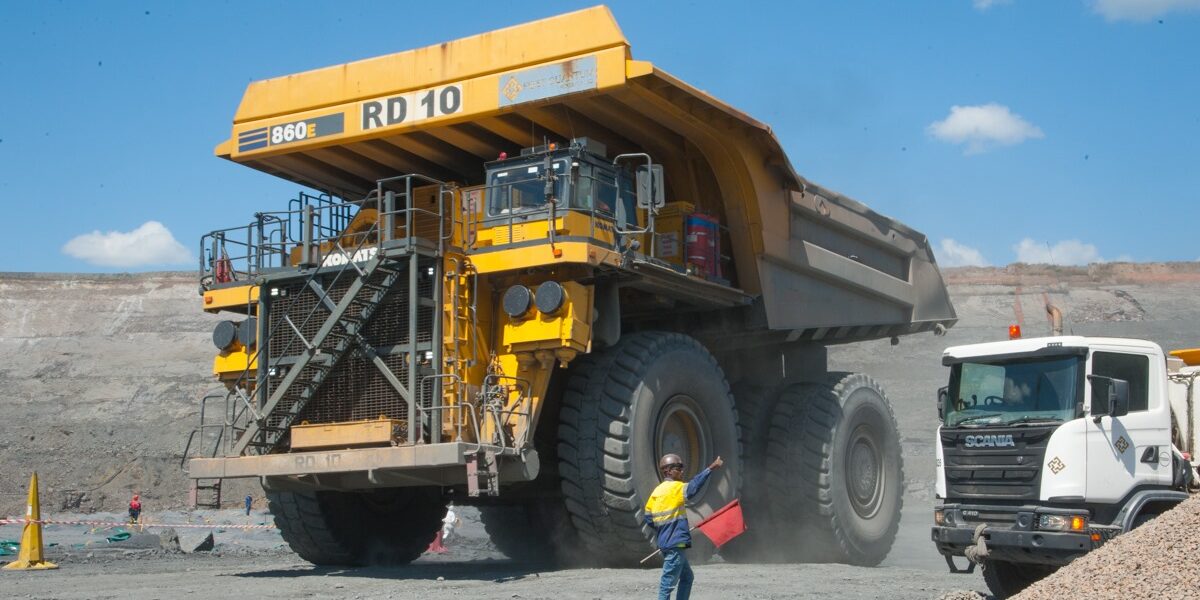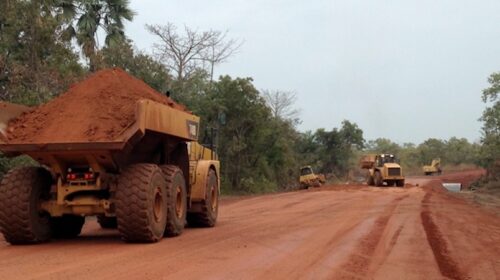FQM’s renewed dedication to Zambia attributed to the new regime
First Quantum Minerals (FQM), a large mining company with a TSX listing, plans to make significant investments in the expansion of its Kansanshi copper and gold mine.
This shows not only the persistent demand for these two metals from international markets, but also the company’s dedication to a nation that recently welcomed a new political leadership that aims to raise Zambia’s status as a mining investment destination going forward.
According to Dr. GODWIN BEENE, an expert in FQM government relations affairs, LAURA CORNISH.
Zambia’s mining tax regime, amended in 2019, has seen investment from the sector dwindle and total copper production output stagnate ever since. But the introduction of new president Hakainde Hichilema (appointed into office in September 2021) could change this as he has reopened the door to working with local mining companies to establish a more investment-friendly tax regime.
This could be one of the key deciding factors that will enable the FQM board to give the green light on a major expansion project at its Kansanshi operations.
“Regardless of the regular policy changes that have occurred in Zambia, FQM has built a solid operating base in the country, and we’ve continued to deliver significant volumes of copper from both Kansanshi and Sentinel – which together are responsible for producing more than half of Zambia’s total copper output. Kansanshi is also the largest gold producer in the country,” Beene starts.
In 2021 Kansanshi produced 202 000 t of copper and 128 000 oz of gold while Sentinel produced 233 000 t of copper (with a record last quarter contributing to this number).
Situated in Solwezi in the north-western province of Zambia, Kansanshi has been producing copper and gold since 2005 and has undergone numerous expansions since then. It is FQM’s flagship operation, globally. “The mine however has reached a point where most of its high-grade resources have been depleted,” Beene notes.
In 2021 the mine’s copper production was 9% lower than the previous year, mainly due to lower grades in the mixed and oxide circuits, coupled with lower oxide recovery and 3% lower throughput, which was also the result of unplanned maintenance and processing of competent mixed ore.
2022 is expected to maintain similar volumes to those achieved in 2021 – of between 190 000 and 210 000 t of copper (and a consistent 120 000 – 130 000 oz of gold). “Grades however are further expected to decline over the course of the year from the levels seen in the fourth quarter of 2021,” Beene notes.
The key to Kansanshi’s future lies in the potential introduction of an expansion project – known as the S3 Expansion – which is awaiting board approval. As the Kansanshi pits expand, the volume of near-surface high-grade oxide ore continues to decrease, whilst the proportion of primary sulphide ores increases with depth.
The US$900 million S3 Expansion is expected to transition Kansanshi away from the current, more selective high-grade medium scale operation to a medium-grade, much larger scale mining operation.
A NI 43-101 technical report filed in September 2020 includes the plan for a 25 Mtpa expansion of the sulphide ore processing facility, increasing annual throughput to 53 Mtpa. The expansion would also involve a new larger mining fleet and combined with the new standalone 25 Mtpa processing plant, is expected to create efficiencies and economies of scale. Most of the capital spend on the S3 Expansion is proposed for 2023 – 2024 if the project can obtain board approval. “As you can see, a decision around this project is imminent,” Beene confirms.
In parallel with the expansion of the mine and processing facilities, FQM plans to increase throughput capacity of its Kansanshi smelter from 1.38 Mtpa to 1.65 Mtpa. The capacity increase would be achieved partly through enhancing copper concentrate grades by lowering the carbon and pyrite content of the Kansanshi and Sentinel concentrate feeds and debottlenecking the gas handling circuit, including incorporating a new acid plant. Concentrate processing capacity is expected to be further expanded through modifications to the existing high-pressure leach circuit.
This expansion is also subject to board approval, linked to the investment conditions in Zambia.
In addition to increased capacity, the smelter expansion is expected to create greater flexibility should smelter capacity constraints in the Zambian Copperbelt arise, as well as reduce downstream Scope 3 GHG emissions from the transport and refining of copper concentrate at third party smelters.
“Discussions with the Zambian government remain in play and together we hope to achieve suitable measures to support the S3 Expansion. In doing so, we hope to see more internationally aligned, stable and consistent policies as well. Fortunately, the new administration is very approachable,” Beene notes.
“The nature of the ore body has a declining grade profile and a declining production profile consequently. This expansion would effectively offset the lower grades and allow copper production to remain stable, well above 200 000 t throughout most of its mine life, estimated in 2044,” he adds.
Constructed over four years from 2012, Sentinel represents $2.1 billion of investment – Zambia’s largest infrastructure investment since the Kariba Dam was constructed in 1959. This operation is a steady performer and in fact delivered its best quarterly production of the 2021 year with 60 197 t of copper produced – 9% above the comparable quarter in 2020 – assisted by soft ore treatment and utilisation of secondary crushing.
While copper production for the year ended December 2021 decreased by 7% compared to the previous year, reflecting lower throughput, grade and recovery, production in 2022 is expected to be between 260 000 and 280 000 t.
Grade is also expected to improve from 2021 levels as higher-grade ore is exposed in both the Stage 1 and Stage 2 pits. The focus will be on developing the pits to maintain consistent ore feed as well as supporting the successful commissioning and ramp up of the fourth in-pit crusher, which is already underway after completion of construction in December 2021.
The fourth in-pit crusher is expected to enable the plant to increase throughput to 62 Mtpa in 2022. “The Sentinel mine will continue to operate for another 14 to 20 years as very little additional resource is available in the area,” Beene notes. 12 km from the Sentinel mine is the Enterprise nickel project, which if approved by the First Quantum board, has the potential to be the largest nickel mine in Africa. While Enterprise is still subject to approval, it is also being actively discussed with the government of Zambia.
Discussing FQM’s outlook to replace these ounces in the long-term, Beene again reflects on Zambia’s policy. “We need a conducive environment that also encourages new exploration efforts; for example, allowing companies to conduct their own airborne surveys in order to find new targets and create new data sets would be a positive step in the right direction.”
![]()





